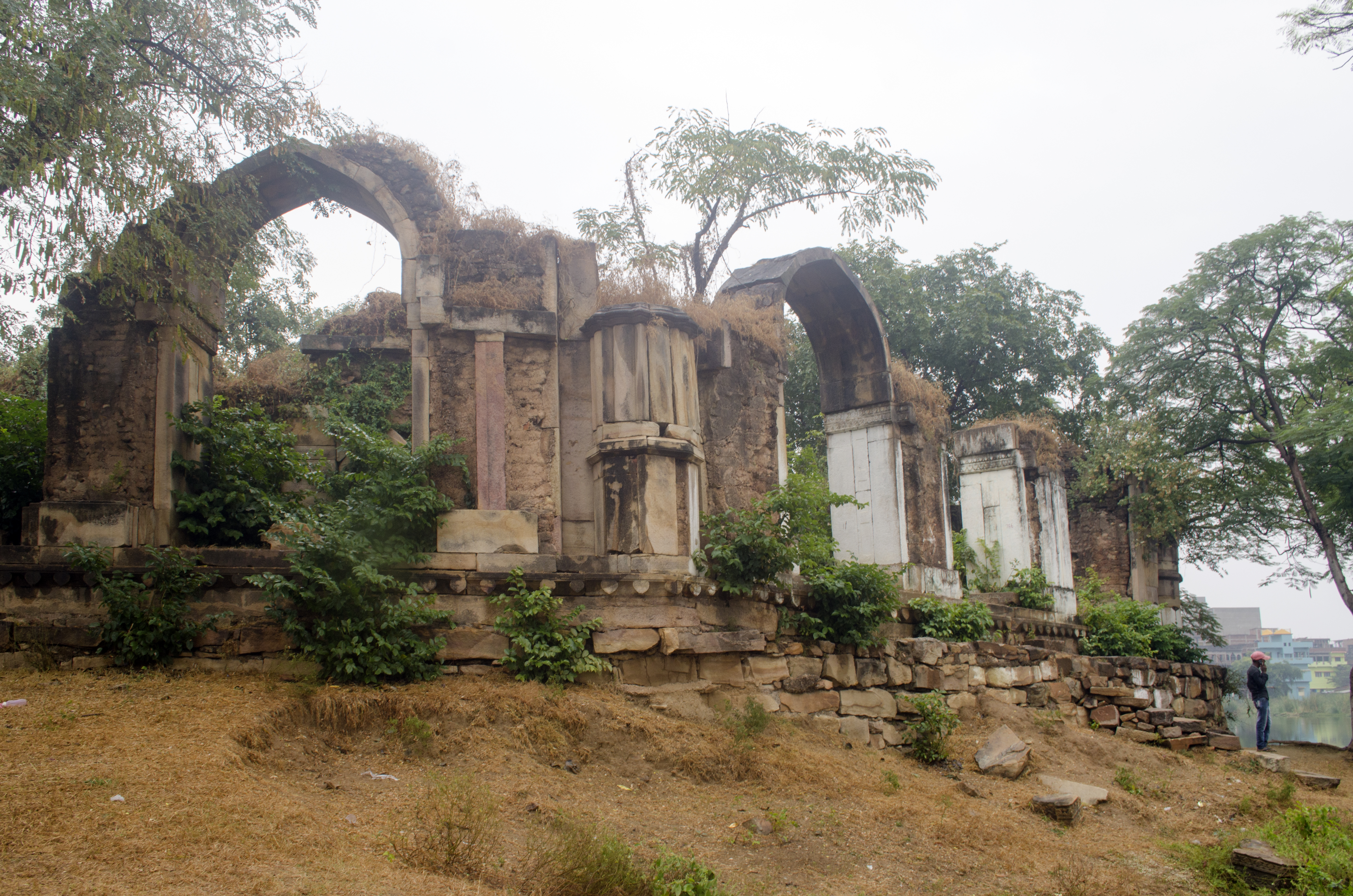|
Udaipur (Madhya Pradesh)
Udaipur is a town in the Indian state of Madhya Pradesh near Ganj Basoda. It is the site of a well-preserved Śiva temple, a monument of national importance protected by the Archaeological Survey of India. History Udaipur's history reaches back to at least the ninth century, but it became famous and appears to have assumed its present name under the Paramāra king Udayāditya (c. 1060-87). It continued to be important in the 14th, 15th and 16th centuries, and was an important town on the north-south trade route. Geography Udaipur is located at 23°54'2"N 78°3'29"E. Transport Udaipur is connected by bus service from Ganj Basoda railway station 93 km from Bhopal Junction towards Jhansi (203 km) and 604 km from New Delhi Jn. Monuments The monuments of Udaipur were first studied by M. B. Garde and published in the reports of the archaeological department of Gwalior state. The data in these reports was compiled into a list prepared in 1952. Śiva temple The mos ... [...More Info...] [...Related Items...] OR: [Wikipedia] [Google] [Baidu] |
States And Territories Of India
India is a federal union comprising 28 states and 8 union territories, with a total of 36 entities. The states and union territories are further subdivided into districts and smaller administrative divisions. History Pre-independence The Indian subcontinent has been ruled by many different ethnic groups throughout its history, each instituting their own policies of administrative division in the region. The British Raj mostly retained the administrative structure of the preceding Mughal Empire. India was divided into provinces (also called Presidencies), directly governed by the British, and princely states, which were nominally controlled by a local prince or raja loyal to the British Empire, which held ''de facto'' sovereignty ( suzerainty) over the princely states. 1947–1950 Between 1947 and 1950 the territories of the princely states were politically integrated into the Indian union. Most were merged into existing provinces; others were organised into ... [...More Info...] [...Related Items...] OR: [Wikipedia] [Google] [Baidu] |
Paramara
The Paramara dynasty (IAST: Paramāra) was an Indian dynasty that ruled Malwa and surrounding areas in west-central India between 9th and 14th centuries. They belonged to the Parmara clan of the Rajputs. The dynasty was established in either the 9th or 10th century, and its early rulers most probably ruled as vassals of the Rashtrakutas of Manyakheta. The earliest extant Paramara inscriptions, issued by the 10th-century ruler Siyaka, have been found in Gujarat. Around 972 CE, Siyaka sacked the Rashtrakuta capital Manyakheta, and established the Paramaras as a sovereign power. By the time of his successor Munja, the Malwa region in present-day Madhya Pradesh had become the core Paramara territory, with Dhara (now Dhar) as their capital. The dynasty reached its zenith under Munja's nephew Bhoja, whose kingdom extended from Chittor in the north to Konkan in the south, and from the Sabarmati River in the west to Vidisha in the east. The Paramara power rose and declined several ti ... [...More Info...] [...Related Items...] OR: [Wikipedia] [Google] [Baidu] |
Islam Shah
Islam Shah Suri (reigned: 1545–1554) was the second ruler of the Suri dynasty which ruled the part of India in the mid-16th century. His original name was Jalal Khan and he was the second son of Sher Shah Suri. History On his father's death, an emergency meeting of nobles chose Jalal Khan to be successor instead of his elder brother Adil Khan, since he had shown greater military ability. Jalal Khan was crowned on 26 May 1545 and took the title "Islam Shah". He was still worried that his brother would threaten his power and tried to have him captured. But Adil Khan evaded his grasp and raised an army. It marched on Islam Shah while he was at Agra. In the battle Islam Shah came out victorious and Adil Khan fled, never to be seen again. The support some of the nobles had given his brother made Islam Shah suspicious and he ruthlessly purged their ranks, strictly subordinating the nobility to the crown. He continued his father's policies of efficient administration and increa ... [...More Info...] [...Related Items...] OR: [Wikipedia] [Google] [Baidu] |
Muhammad Ibn Tughluq
Muhammad bin Tughluq (1290 – 20 March 1351) was the eighteenth Sultan of Delhi. He reigned from February 1325 until his death in 1351. The sultan was the eldest son of Ghiyath al-Din Tughluq, founder of the Tughlaq dynasty. In 1321, the young Muhammad was sent by his father to the Deccan Plateau to fight a military campaign against the Kakatiya dynasty. In 1323, the future sultan successfully laid siege upon the Kakatiya capital in Warangal. This victory over King Prataparudra ended the Kakatiya dynasty. Muhammad ascended to the Delhi throne upon his father's death in 1325. Accounts by visitors of the Sultan Muhammad n describe him as an "inhuman eccentric" with bizarre character. The sultan is said to have ordered the massacre of all the inhabitants of the Hindu city of Kannauj. He is also known for his wild policy swings. Muhammad bin Tughluq had an interest in medicine. He was also skilled in several languages: Persian, Hindavi, Arabic, Sanskrit and Turkish. Ibn Batt ... [...More Info...] [...Related Items...] OR: [Wikipedia] [Google] [Baidu] |



.jpg)